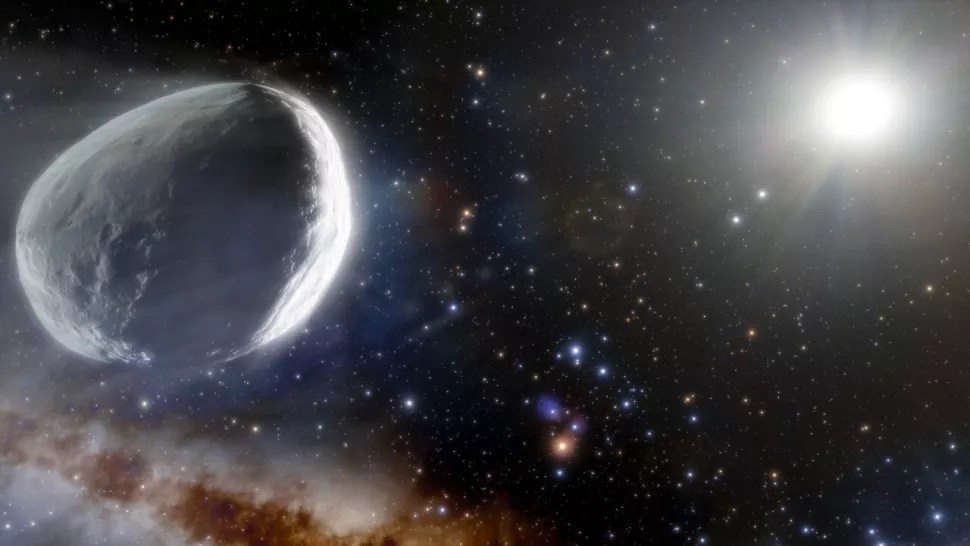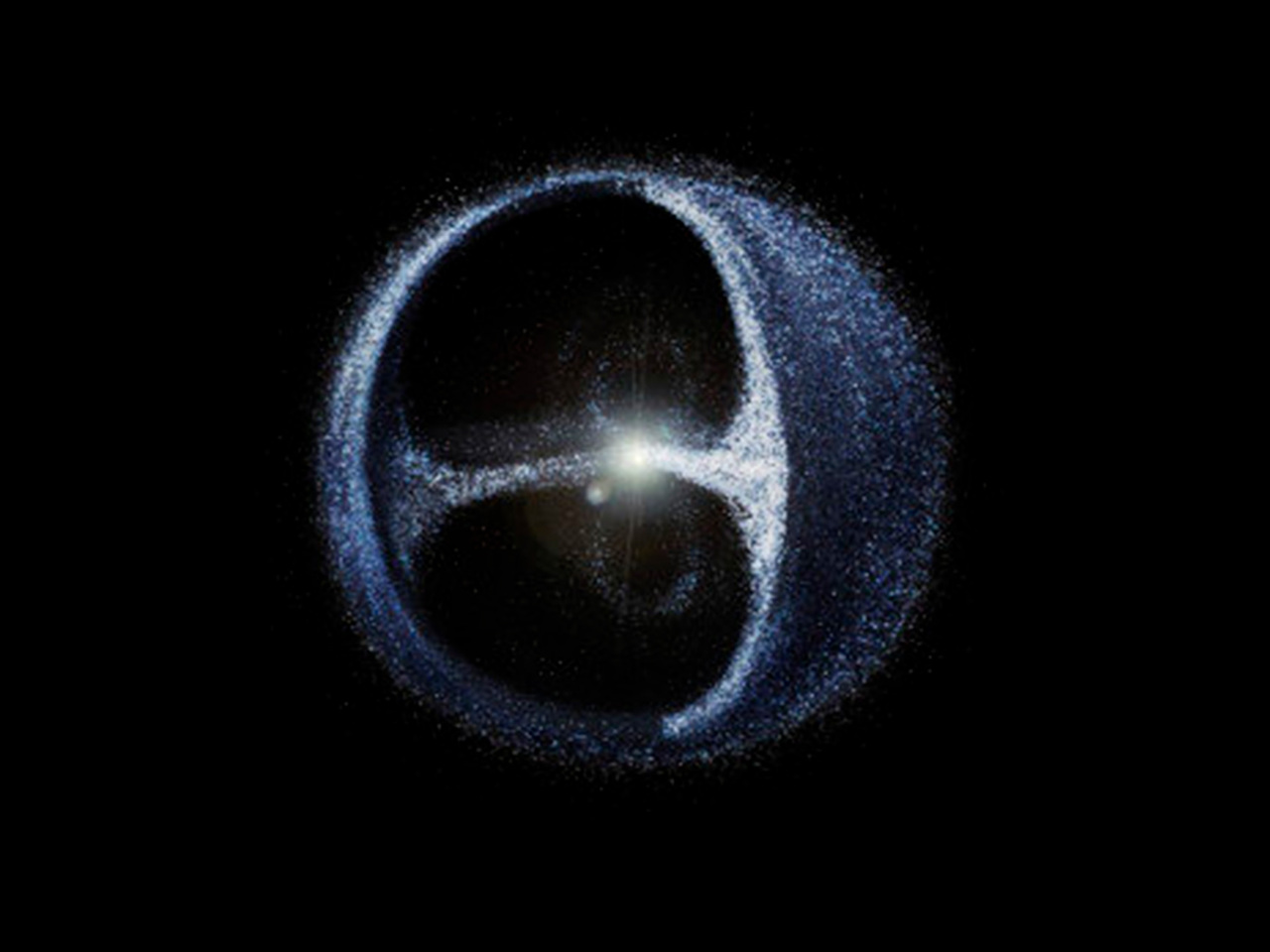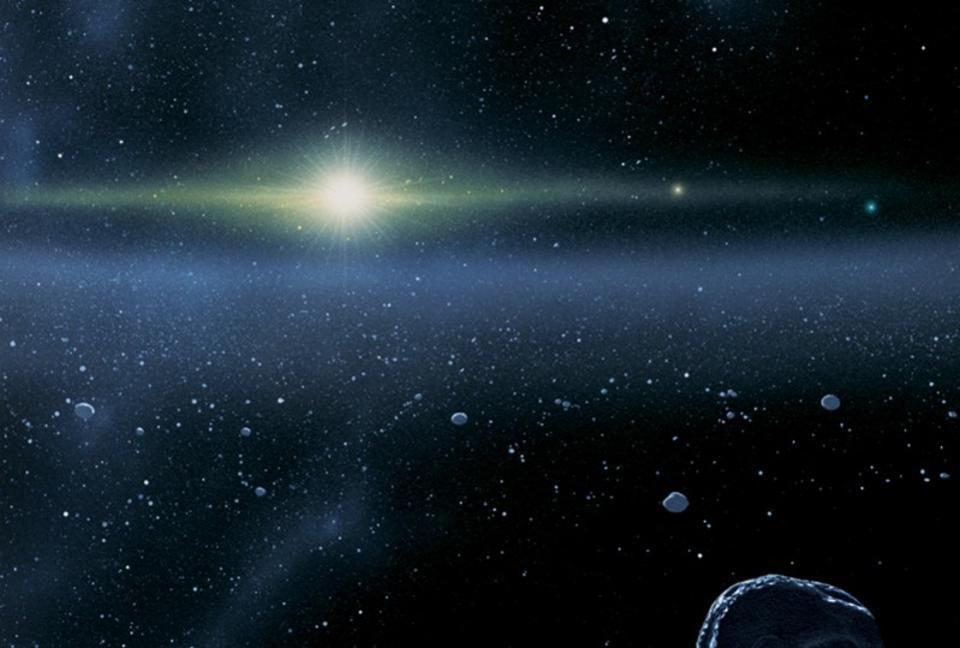What happens if the Solar System’s largest comet collides with Earth?
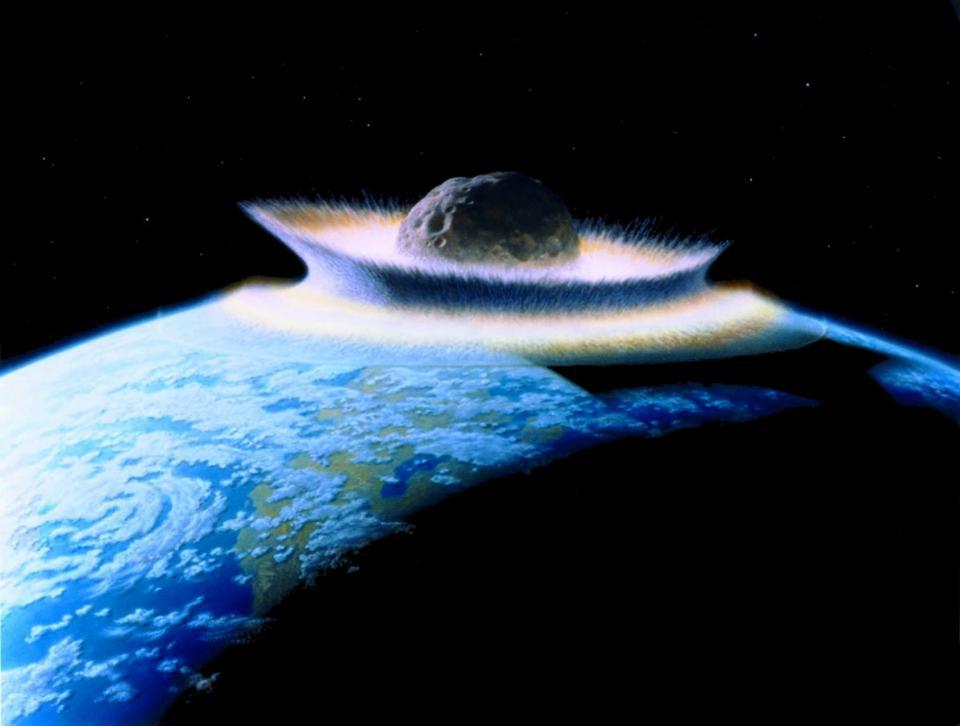
- In 2014, astronomers discovered a new comet originating from the Oort cloud: Comet Bernardinelli-Bernstein.
- Recent measurements with the Hubble Space Telescope have pinned down the diameter of its nucleus to be 119 kilometers: by far the largest of any comet known to humanity.
- The asteroid strike that caused Earth’s last mass extinction 65 million years ago was only 5 kilometers across. Here’s what kind of catastrophe Bernardinelli-Bernstein would cause.
Out there, in the far recesses of the Solar System, a great existential threat lies in wait for planet Earth: the Oort cloud. Formed at the outset of the Solar System, it largely consists of the remnants of the primitive material that led to the formation of our Sun and the planets. Whatever wasn’t either boiled off by the Sun or locked up into the planetary, lunar, asteroidal, or Kuiper belt objects we have today remained in a spheroidal cloud, anywhere from a thousand times the Earth-Sun distance to one or two light-years away.
Today, these bodies, mostly a mix of ice-and-rock, remain in slow, quasi-stable orbits in the deepest recesses of our Solar System. But every once in a while, a chance gravitational encounter will perturb the orbit of a particular object, and send one careening into the inner Solar System. Even though they have periods that can rise into the millions of years, the wrong gravitational “nudge” from another massive body could send any one of these on a collision course for Earth.
While Comet Bernardinelli–Bernstein, the most massive comet ever discovered, isn’t going to hit Earth on this current pass through the Solar System, the far future is anyone’s guess. Here’s what would happen if a collision were to occur.

There are three major concerns whenever an object is going to impact the Earth in terms of the damage it will do.
- How massive the object is. More mass equals more energy imparted into the Earth, which translates into more destruction. If you were to double the impactor’s mass, the energy imparted into the Earth would also double.
- How fast the object is moving. The faster the object moves, the greater the amount of kinetic energy it brings with it, and that energy gets dissipated into the Earth upon impact, causing the damaging effects we correctly have a healthy fear of. If you double the impactor’s speed, the energy imparted into the Earth quadruples; the energy scales as the square of the impactor’s relative velocity to Earth.
- What the object is made out of. Composition isn’t everything, but an object that’s “more rocky” is generally more dangerous than one that’s “more icy” for a few reasons. Asteroids are more likely to reach the ground and create an impact crater, while comets are more likely to create airbursts. Comets have more volatiles, so they’re more likely to split into smaller fragments, some of which might miss Earth entirely, and the ones that do hit us will certainly dissipate some of their energy in the atmosphere. Finally, asteroids contain a greater fraction of elements that are absolutely toxic to ingest or inhale, so they’re a greater threat to life as well.

There are, of course, other concerns, like the location of impact as well as the angle of impact, but those are only relevant when you have smaller impacts: the kinds that are unlikely to cause mass extinctions. In general, if you had an object strike the Earth that was on the order of a kilometer in diameter or more, it would pose the type of existential threat that would not only bring an end to human civilization, but to a tremendous fraction of the species currently extant on Earth today.
As a reference point, the object that struck the Earth 65 million years ago, causing what we historically know as the fifth great mass extinction, was almost certainly an asteroid and not a comet. The knowledge we’ve gained of Chicxulub crater, including its size, as well as the layer of iridium-rich ash found all over the globe in sedimentary rock strata, strongly indicate that the impactor was an asteroid. Asteroids are also much more likely to strike Earth than comets are, as asteroids:
- are pretty much all in the same plane as the planets to begin with,
- are in relatively close proximity to our Solar System’s greatest gravitational perturber, Jupiter,
- and come to Earth from much less far away than comets do, making a direct hit more likely.
All told, what we know as the K-Pg extinction event was likely caused by a rocky object originating from the asteroid belt that was approximately 10 kilometers in diameter.
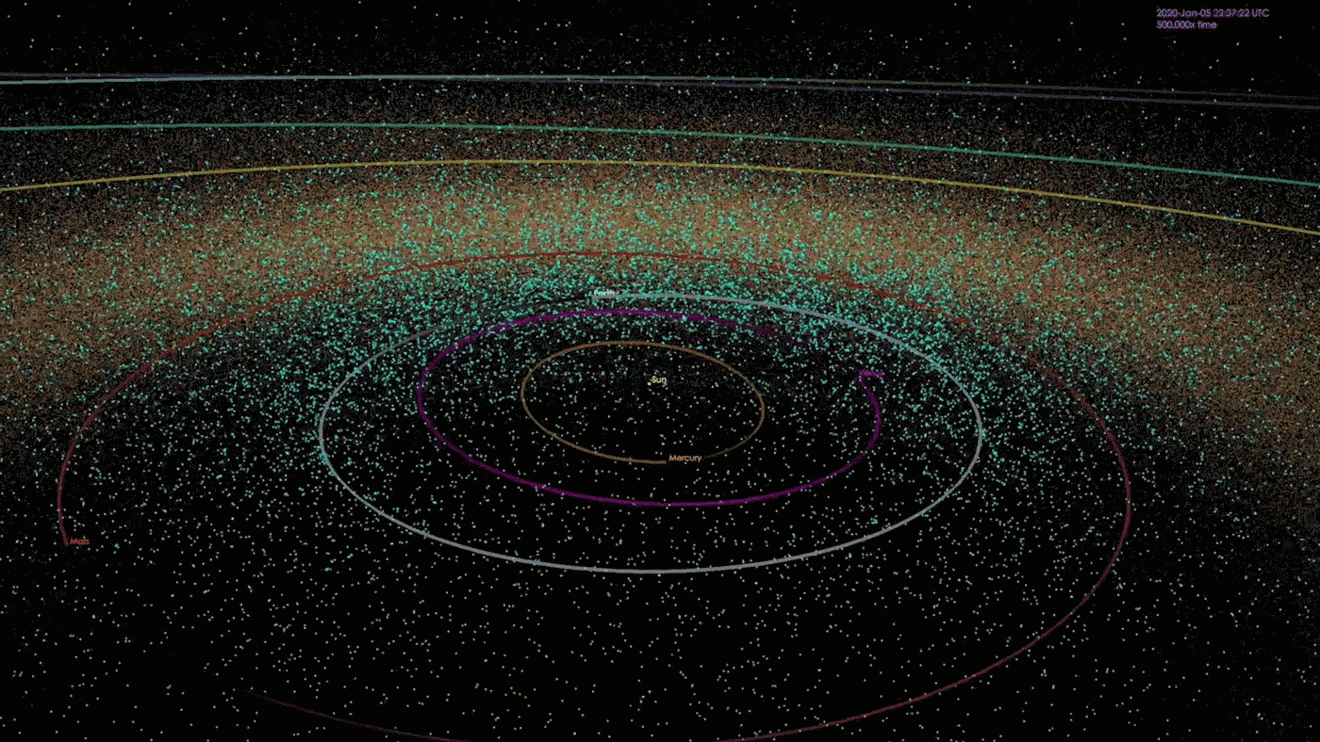
You might think that’s impressive, and sure, in some ways, it very much is. But here are some facts that might put that event, catastrophic as it was, into a little bit of perspective.
- The typical density of an asteroid is somewhere between 2 and 3 grams per cubic centimeter, which means, for the 10-kilometer wide asteroid that struck our planet 65 million years ago, its total mass was somewhere around a few ~1015 kilograms, or a few trillion tonnes.
- Asteroids, when they get perturbed so that they cross into the inner Solar System, typically cross Earth’s orbit with a speed of around 25 kilometers-per-second. Given that Earth orbits the Sun at about 30 kilometers-per-second, and that both asteroids and Earth typically orbit the Sun in the same general direction, the typical impact velocity of an asteroid that hits Earth is around 17-20 km/s.
- Putting those factors together, the total energy of that impact was somewhere in the ballpark of 1024 J, give or take whatever the uncertainties are.
But coming from the far reaches of the Oort Cloud, an object of comparable mass would have a much greater impact speed, and hence would impart a much greater amount of energy to Earth. And Comet Bernardinelli-Bernstein, currently on its way into the Solar System from more than half a light-year away, is nowhere near “comparable mass” to the K-Pg impactor.
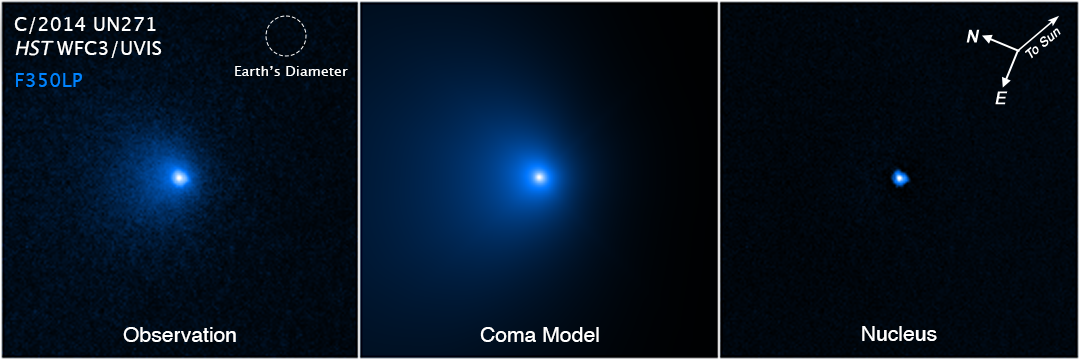
Comet Bernardinelli-Bernstein, instead, now holds the record for being the comet with the largest nucleus ever seen, with a diameter estimated to be 119 kilometers (about 74 miles) from the latest Hubble Space Telescope data. Previously, ALMA data had indicated a diameter that was actually slightly greater: of 137 km (85 miles), but the new estimate has significantly smaller uncertainties.
Even with a much lower density, as comets are typically at around 0.6 grams per cubic centimeter, the enormous size of this object translates into a fantastically large mass. Remember that when you double the diameter (or radius) of an object, you’re effectively making it eight times the volume. Given that comet Bernardinelli-Bernstein is more than ten times the diameter of the suspected K-Pg impactor, it comes in with more than 1000 times the volume, giving it an estimated mass of somewhere around 5 × 1017 kg, and possibly more.
Now, remember that it comes to us not from somewhere between the orbit of Mars and Jupiter, like asteroids do, but rather from the Oort cloud, and you’ve got a recipe for an unprecedented disaster.

An object that falls into the inner Solar System from the Oort cloud is going to gain speed primarily owing to the gravity of the Sun. To bring an object to the same distance from the Sun that Earth is at, from an origin in the far reaches of the Oort cloud, means it will move at around 42 km/s.
But if you’re going to strike the actual Earth itself, you’re also going to fall into Earth’s gravitational potential well, and the Earth itself will also be moving with respect to you as it orbits the Sun. When you fold in all three of these effects, you wind up finding that most impacts will occur with a range of speeds, but generally fall between 50 and 60 km/s, or around triple the speed that an asteroid impact typically possesses. And remember: kinetic energy depends on the velocity squared, so three times the speed means nine times the energy.
All told, when we do the math, we find that an impact between comet Bernardinelli-Bernstein and Earth would release a total amount of energy that’s right around 1028 J.
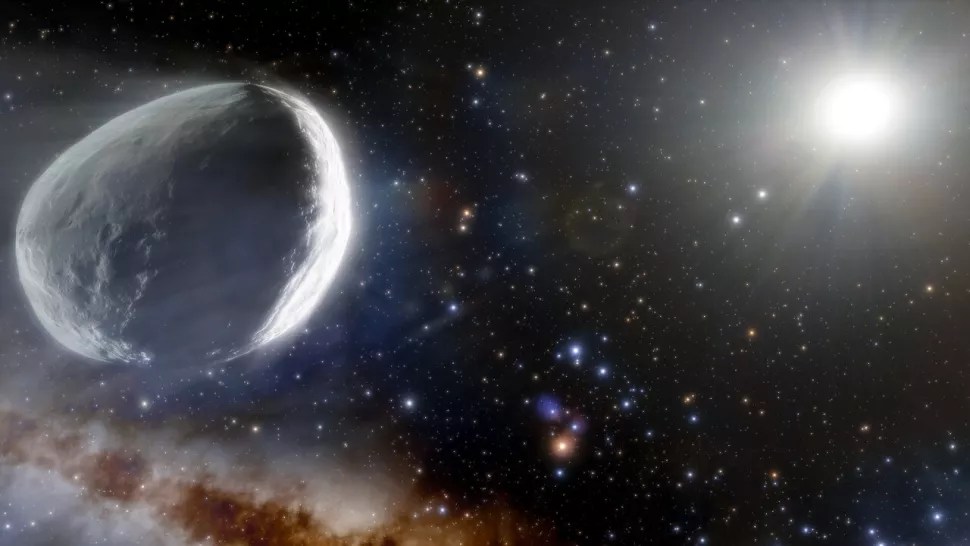
Humans are notoriously bad at reckoning with large, counterintuitive numbers, as we default to conceiving of such things as “unimaginably large”. But part of the beauty of science is that it’s quantitative, and that means we can calculate — not perfectly, but to a reasonable approximation — what such a large-magnitude event would cause on Earth.
First off, no, it would not destroy the entire planet. A large enough impact, one that imparted enough energy to our world, would be capable of gravitationally unbinding it, but that would require about 20,000 times more energy than a collision between Earth and comet Bernardinelli-Bernstein. We would at least avoid the most catastrophic type of “destruction” that there is. The Earth, overall, would remain intact.
But that doesn’t mean the Earth is safe. This event would be thousands to perhaps even ten thousand times as energetic as the asteroid strike that occurred 65 million years ago, and that impact left a crater some 200 kilometers across. If comet Bernardinelli-Bernstein remained intact, as a solid object, it would completely break and rearrange the crust everywhere across Earth’s surface, similar to what many theorize occurred on the surface of Mars when its original, large, third inner moon fell back onto the red planet, creating the wacky Martian topography we see today.

Yes, there will be large amounts of ash, dust, and debris kicked up into and well above the atmosphere, and an impact of this magnitude might even be strong enough to create additional satellites for our planet: moons and moonlets, albeit ones that are much smaller than our present-day Moon. Satellites that coalesce to multiple kilometers in size are not out of the question; we could wind up with something akin to Phobos or Deimos, just like Mars presently possesses.
Yes, the Earth would be covered in a pall of ash that blocked out the Sun, possibly for months at a time, and much of life on Earth would go extinct due to the lack of sunlight.
But it’s possible that even the creatures that live around hydrothermal vents, at the bottom of the ocean, would be affected by such a strike. The reason? An impact of this magnitude would smash the Earth so hard that the outer layers of our planet, including the atmosphere and oceans, could be kicked off of our surface and sent into space. Although the comet itself will likely bring new water and volatile molecules to Earth, and some of that water and atmosphere that gets kicked up will eventually fall back onto Earth, every single living creature will be at risk of extinction from such an impact.
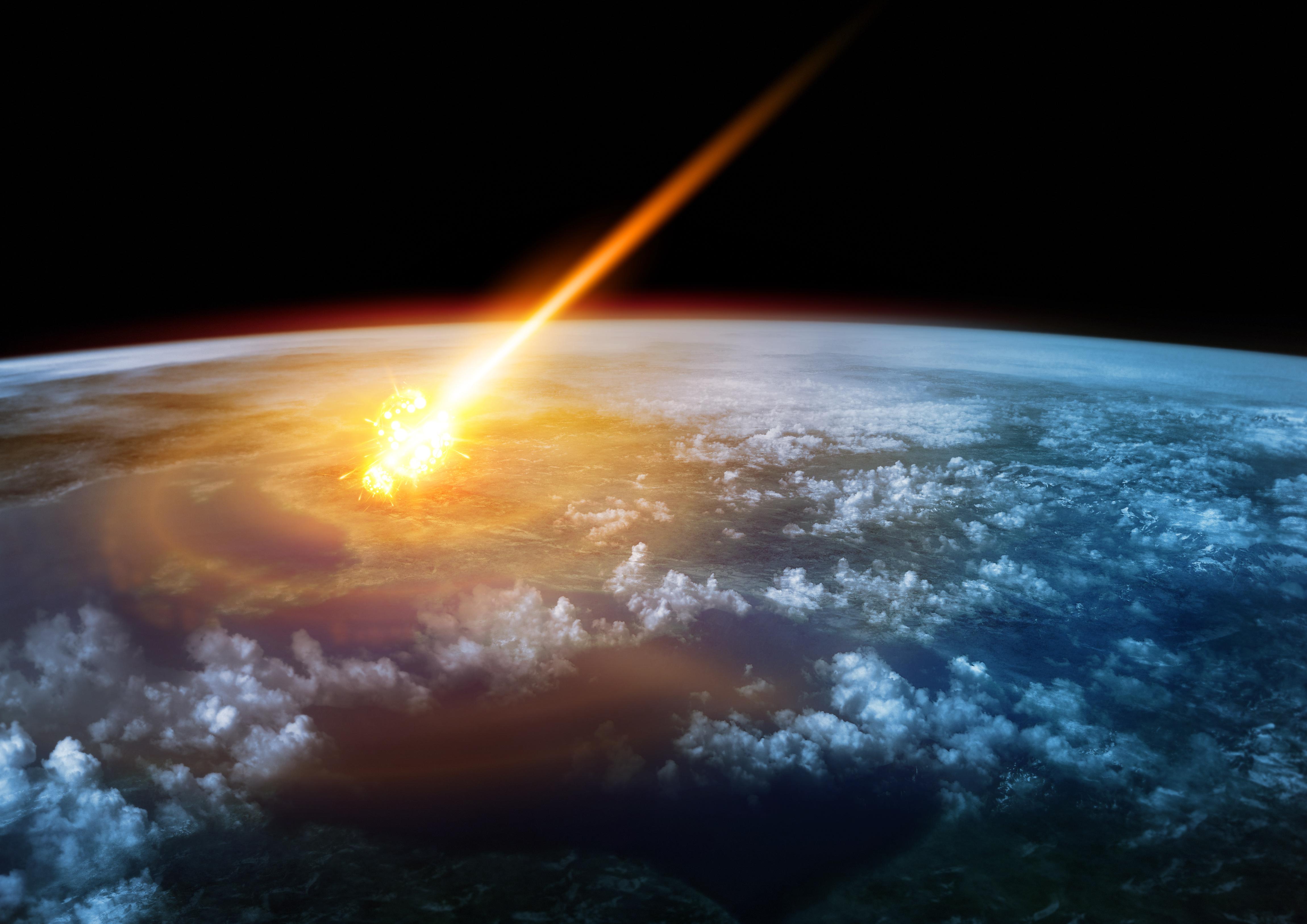
The one possible saving grace, however, is this: a comet this large, that approaches Earth from the Oort cloud, will experience substantial tidal forces from Earth’s gravity, and may be torn apart into a series of smaller fragments. This is something we observed for 1994’s impact of comet Shoemaker-Levy with the planet Jupiter, where a total of around two dozen large fragments were identified.
Whereas each and every one of those fragments impacted Jupiter, however, Earth’s gravitational pull is substantially lower than that of Jupiter. The implications are that if the comet’s nucleus were broken up far enough in advance — a very real possibility — it’s possible that a majority of the mass of this object could miss the Earth entirely. A series of smaller impacts would still be bad, both for humans and all creatures on Earth, but it would lead to a much less risky set of outcomes for Earth’s oceans and atmosphere.
Regardless of whether this occurs or not, a future of:
- months of darkness,
- a complete disruption of Earth’s crust, oceans, and atmosphere,
- the possible ejection of large portions of all three,
- the rushing of sub-crustal magma up to the surface and even a possible re-surfacing event,
- and a firestorm that lasted decades or more, from backfalling debris,
will put any living thing that survives the initial impact (and associated fireball) at risk of total extinction.

One myth that often comes up in discussions such as this is, “Wouldn’t some other object, like the Moon or Jupiter, possibly protect us from a potential impact?” And although it’s always possible, the odds aren’t in our favor. In fact, when we perform the requisite calculations, we find that any additional mass in the Solar System, overall, makes it more likely that an impact will occur. Jupiter might absorb most of the asteroid and comet strikes in the Solar System, but it also results in a net increase in the number of Earth impact that occur by about 350%. Similarly, the Moon’s additional gravity makes impacts on the Earth-Moon system more likely, increasing the collision rate with Earth by an even greater amount than the Moon absorbs impacts, despite its plethora of craters.
If comet Bernardinelli-Bernstein did strike the Earth, it’s very reasonable that would either be the end of Earth as a “living planet” or it would wipe out all life that was more complex and differentiated than a single-celled organism. Earth could wind up as a nearly airless world, or it could lose almost all of its surface water. If we came back a million years after such an impact, we might find that the entire geography of our planet was unrecognizable, having been resurfaced after such a mighty impact.
Fortunately, during this pass into the Solar System, comet Bernardinelli-Bernstein won’t come any closer than the orbit of Saturn, which it will reach in 2031. But about 4.5 million years from now, it will return. If the wrong series of gravitational encounters occurs, a direct hit would be the most catastrophic event to occur since impact that led to the formation of our Moon. We must stay ever vigilant, as our extinction is always just one rogue object away.


